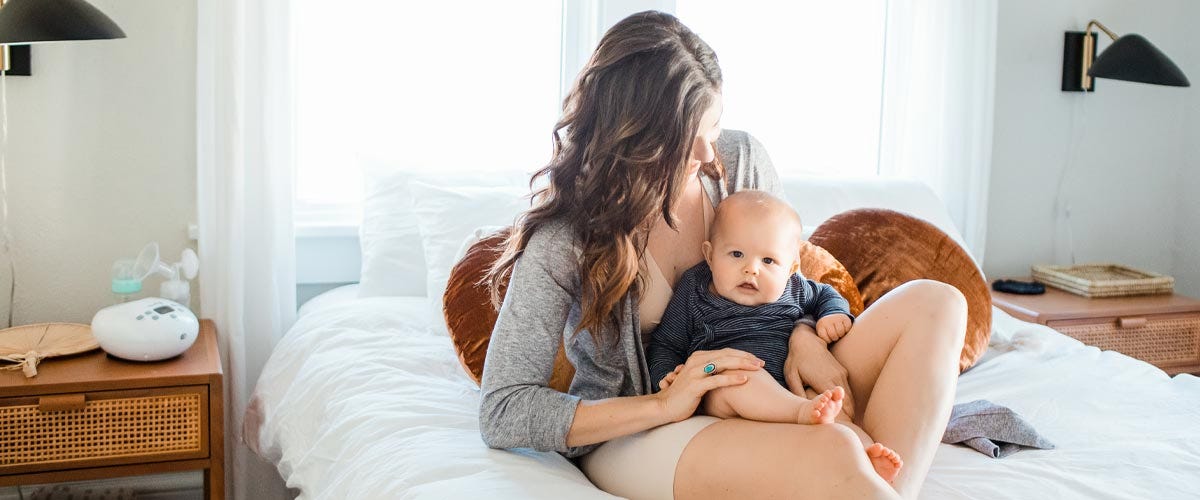Holiday Travel Survival Guide: Tips for Pumping While Traveling
How to Plan for the Trip
Things to Take Into Account:
- How long will you be traveling? Calculate an estimate of ounces to be collected in total.
- What storage methods will be available on the trip? If staying in a hotel, call ahead to see if there is access to a freezer.
- Account for space in your carry-on or checked bag to hold milk. Is it possible to combine/consolidate with the rest of your luggage?
- Some airlines provide an allowance for diaper bags, strollers, etc.
Duration of Flight and Temperature Regulation
- Frozen packs will stay cooler longer.
- Ice should be available on the flight.
- Bottle coolers are smaller, more ideal, and can hold ice.
- If flight or drive is longer than three hours, moms will need to pump during the flight if the child is not present to feed directly from the breast.
- Fresh milk is safe at room temperature for up to four hours.
- Most airlines consider breast pumps to be medical devices and not carry-ons.
- It is legal to breastfeed on planes with or without a cover.
Power Source
- Will there be an outlet on the flight or in the car?
- Is a portable pump with a reliable battery and suction the better option?
At the Airport
- Notify the attendant checking bags if you are bringing milk storage bags. Specify the method of keeping cool or frozen.
- Notify them if you are carrying on a pump, as it will most likely be considered a medical device, and you will not be charged extra for them.

Flying with Breast Milk: TSA Guidelines
- Traveling with expressed breast milk has been made much easier with updated guidelines from TSA. When traveling, planning for the following guidelines will prevent unnecessary dumping of your hard-earned supply.
Checked Bags
- Will be weighed along with luggage. Pack in a secure, temperature-regulated cooler, preferably frozen.
Carry-On
- CAN be taken as a carry-on in “reasonable” quantities and is exempt from the liquid rule of 100ml or less, whether or not the baby is present. It will need to be removed from your bag and screened separately.
Notify the TSA Officer
- Formula, breast milk, and juice for infants and toddlers are permitted in reasonable quantities. Inform the TSA officer at the beginning of the screening process that you are carrying breast milk, formula, or juice in excess of 3.4 ounces in your carry-on bag. These liquids are typically screened by X-ray.
On the Plane
Whether planning to pump or breastfeed, find a way to be comfortable.
- Get organized beforehand if bringing your pump, bottles, and storage bags for easier access from your seat. Notify your attendant as necessary, especially in getting access to power sources and ice for storage later.
- Wear a scarf if not feeling confident to pump or feed from the seat. They are discreet and fashionable in all seasons. They also make a better option than the restroom.
- Sounds of the plane will drown out the sounds of pumping.
- If breastfeeding, offer to feed during take-off and landing to help the child with a change in altitude and popping ears.
Dealing with People
Many will not even notice pumping or feeding, but in the case that they do and have an opposing opinion it is good to come prepared with correct answers and actions.
- Don’t go in expecting an altercation or argument. Remember that normalization takes time with some and remember why you’re ultimately doing this: to provide nourishment and prevent clogged ducts from not removing milk (which can easily affect health!)
- Stay level-headed and firm if addressing an opposer - this lends more credibility if the conversation requires supervisor intervention.
- Print out the airline’s policy for pumping, storage, and feeding ahead of time.

Family opinions can sometimes add to the stress of pumping and feeding in public. Once again, remain the level-headed in your convictions. Confidence is a great defense, even if you have to fake it for the time being.
Always Remember:
- It’s not indecent exposure.
- There is a huge health benefit to being able to continue pumping and feeding.
- If not drawing attention, hardly anyone actually notices, and people should not stare so close to actually see anything when they DO notice.
It’s okay to feel nervous or not confident. Some never feel truly comfortable. Find ways that work for YOU to make the experience better.








